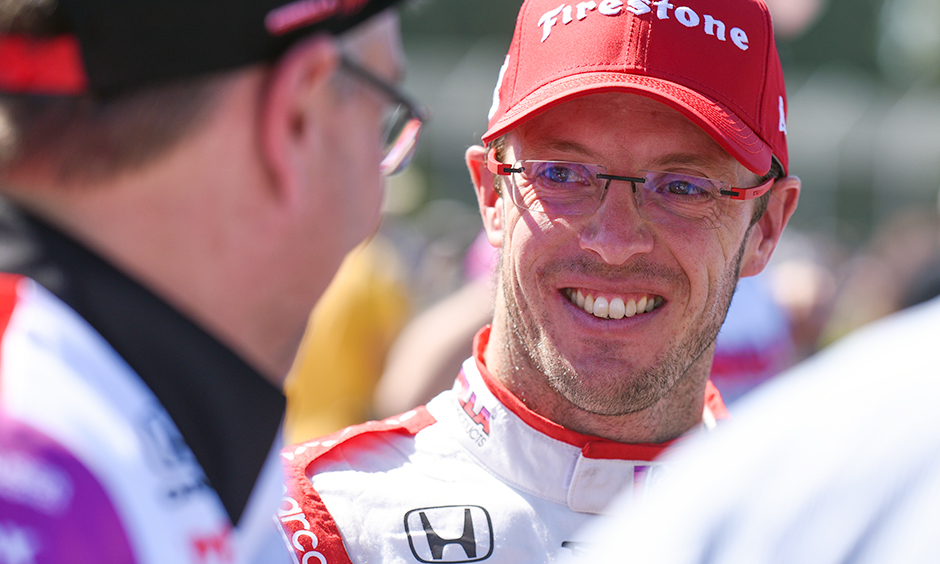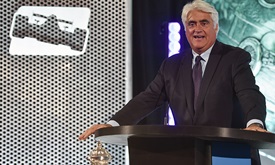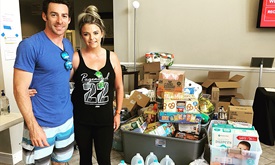Been There, Done That: Bourdais can relate to Wickens' recovery process
OCT 01, 2018
A return to Indianapolis last week provided Sebastien Bourdais with more than just an opportunity to celebrate the 2018 Verizon IndyCar Series season at the Victory Lap Celebration at Union 50.
Earlier the same day, Bourdais visited fellow driver Robert Wickens, who is recovering from serious injuries suffered in an August crash. Wickens, in fact, is in the same rehabilitation clinic where Bourdais recovered from his own serious injuries after a scary 2017 crash during qualifying for the Indianapolis 500 presented by PennGrade Motor Oil.
“The main reason why I’m here today is I could combine this with seeing Robbie,” Bourdais said. “I stopped by and saw Robbie this afternoon. You don’t do it for you. You want to show support and you want to go and see him. Race car drivers don’t like hospital rehab facilities. It’s two rooms down from where I was last year, so I don’t need any reminders of that.”
Wickens, a 29-year-old Canadian who drives for Schmidt Peterson Motorsports, was named Sunoco Rookie of the Year. He’s working to recover from a spinal cord injury and has undergone multiple surgeries to repair fractures in both legs and hands.
Bourdais, a 39-year-old Frenchman who has won four Indy car series titles, is still trying to get his body back in shape after his crash more than 16 months ago. He remembers so many long, sweaty hours in rehab after suffering multiple fractures to his pelvis and a broken hip.
“I had never gotten hurt before, so I didn’t know what it was,” he said. “It could have been a lot worse. You look at Robbie and it puts things in perspective. I hope he comes back. He was pretty exceptional, to do what he did in his rookie year.”
Bourdais, who drives the No. 18 Honda for Dale Coyne Racing with Vasser-Sullivan, didn’t waste any time in promising he would return last year. But, admittedly, Wickens is facing a more challenging and lengthy recovery process.
“If there’s a problem, you listen to the doctors, you get a prognosis, you have a course of action, you know the time frame and then you work it out,” Bourdais said. “Here’s what’s realistic about this situation and here are the steps. Providing there are no complications, this is how it’s going to work, plus or minus a couple of weeks. If I stay the course, this is what’s realistic. I was a little bit ahead of schedule.”
Bourdais missed nine races but returned for the final three. He delivered an inspiring victory in winning the 2018 season-opening Firestone Grand Prix of St. Petersburg. He also won that race in his hometown in 2017. He finished seventh in the points this past season.
“It’s gotten a lot better. I feel pretty good,” Bourdais said. “I’m slowly starting to run again. It’s slowly coming back together.
“The running was still having an impact where I’d take too long to recover from it. Then you can’t handle the workload. If I run a half an hour and then it’s going to take me more than a week to get over the pain and the aches, then I might as well not do it. There are other ways to work out. You’re reactivating all the rapid fibers and stuff like that in your muscles. That what’s I’ve been missing. Now I can slowly get back into that. I’ve been doing it on the treadmill. It’s all working out, it’s just taking time for the deep tissue to settle back in and stuff reacting to the intense requests. It’s a process.”



















